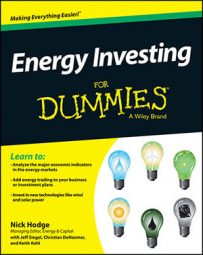As an energy investor, you should know that there is a dark side to burning coal in terms of pollution and climate change. The basic problem is that coal is much cheaper than other fossil fuels ($1 to $2 per MMBTU, compared to $6 or $12 for oil). It's also a heavier pollutant than its peers.
The good news is that the low cost of coal means that high-cost solutions to pollution and climate change can be adopted, and king coal will remain competitive as a global energy source.
Destruction of the Earth, above ground and below
Coal mining takes a tremendous toll on the environment by destroying mountain ranges and polluting waterways. Black lung is a killer for miners. Underground seams of coal have been known to catch fire and burn for years.
Thousands of underground seam fires are currently burning around the world. The most publicized is perhaps the one that started in 1962 and is still burning underneath the now empty town of Centralia, Pennsylvania. One in India has been burning since 1916.
But the real problem is the waste products that are produced after coal is burned in power plants.
Carbon dioxide and air pollution
Coal plants produce the largest amount of carbon dioxide (CO2) emissions in the world. Scientists believe that CO2 is the primary cause of global warming, or climate change. The combustion of coal, whether for electricity, heat, or cooking, is the leading cause of toxic air pollution that causes smog and acid rain.
China has an epic problem with air pollution. Recent air pollution was so bad that it was reported as "beyond index" according to the U.S. Embassy's American Air Quality Index. Air quality is a very real problem. These emissions can be fixed with scrubbers and other technologies, but they're expensive and inefficient.
The goal of investing is to make money. In modern litigious times, it's important to know what negative effects an investment can have on the environment and what drag that can have on your bottom line. No one wants to see years of gains wiped out by an EPA lawsuit or some other black-swan event.
On the flip side, some companies make money by cleaning up hazardous situations and/or producing the systems that make coal burning cleaner.
Acid rain
One of the biggest problems with coal burning is that it produces acid rain. Acid rain is a serious problem in the eastern United States and Canada. It kills fish and trees and causes harm to animals that must deal with a loss of habitat. It even has been known to destroy the paint on cars.
Acid rain is caused by a mixture of sulfur dioxide (SO2) and nitrogen oxides (Nox) mixing with water in the atmosphere and falling as rain.
The good news is that the effects of acid rain in the United States have been greatly reduced. The 1975 Clean Air Act and its 1990 amendments forced coal utilities to add scrubbers to their plants. EPA data shows a steady decline in the sulfate content in the air and rain, as well as the acid in lakes in the northeastern United States.
Flying ash
The second largest environmental problem from coal plants is fly ash. This is particulate matter or soot that causes lung problems like bronchitis and asthma. Fly ash can be abated by using bag houses, which are like giant fabric air filters for coal-fired power plants.
Mercury
The last major environmental and health concern regarding coal burning is that it produces mercury. In fact, half of mercury pollution created by humans is put out by coal-burning power plants. Mercury is a toxic heavy metal that is extremely poisonous. A small amount — less than a thimble full dumped in a small lake — can make fish inedible.
Despite the benefits of abundance and low cost, burning coal can be a nasty business. Besides the aforementioned problems, coal-fired power plants also emit lead, cadmium, carbon monoxide, hydrocarbons, and arsenic.
But as an investor, every problem presents an opportunity. Companies that are searching for clean-coal technologies include Duke Energy (NYSE: DUK), ConocoPhillips (NYSE: COP), Hitachi (OTC: HTHIY), and Siemens (NYSE: SI).

